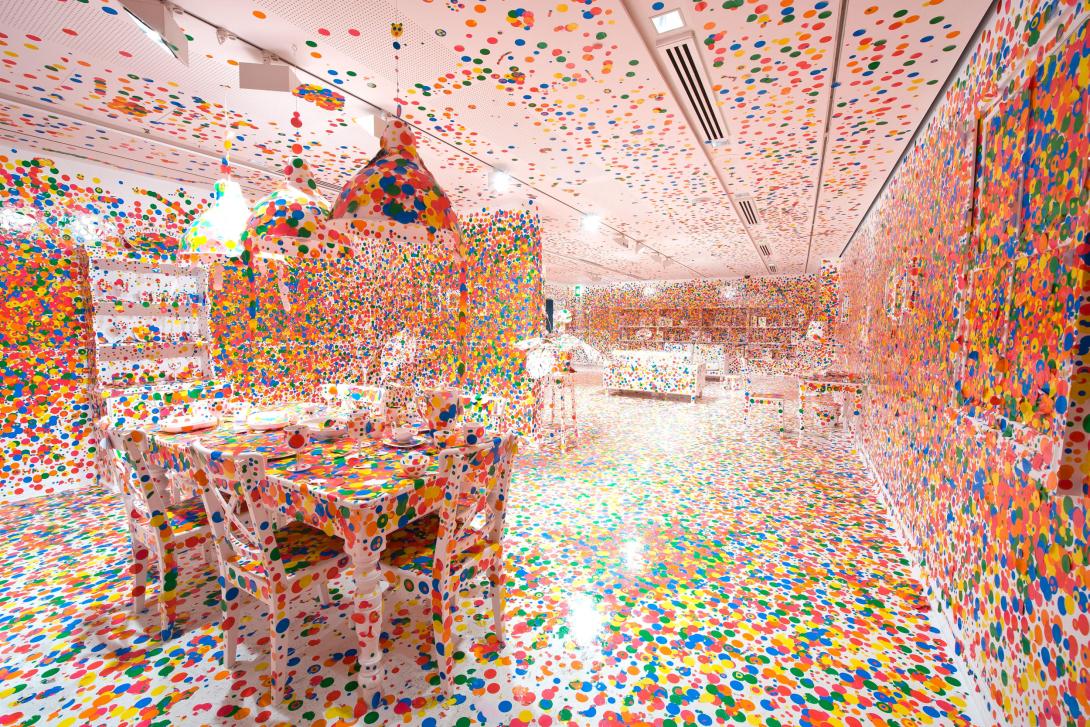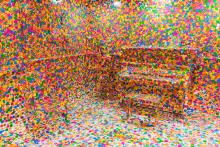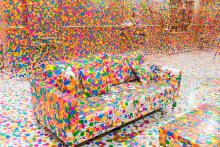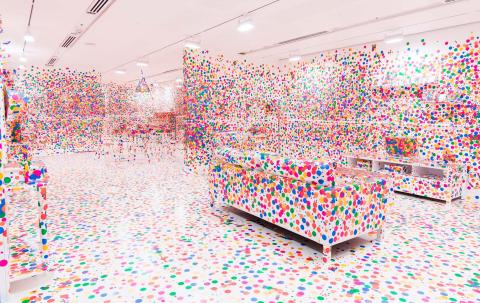Obliteration revisited
When leading contemporary Japanese artist Yayoi Kusama was a young girl, she started seeing the world through a screen of tiny dots. They covered everything she saw — the walls, ceilings, and even her own body. In her artwork, Kusama has used dots to cover many different surfaces and fill rooms. She calls this process ‘obliteration’, which means the complete destruction of every trace of something.


Yayoi Kusama’s The obliteration room 2002–present — before and after activation — installed at GOMA, 2012 / Furniture, white paint, dot stickers / © YAYOI KUSAMA / Photographs: QAGOMA
In the large-scale interactive installation The obliteration room, Children are invited to enter the world of the artist and ‘obliterate’ an Australian domestic space by adding colourful dot stickers to the white furniture, objects and surfaces.
The obliteration room revisits the popular interactive children’s project developed by Kusama for the Queensland Art Gallery's fourth ‘Asia Pacific Triennial of Contemporary Art’ (APT4) in 2002. The 2014 iteration coincided with the ‘We can make another future: Japanese art after 1989’ exhibition, while a 2017 iteration was installed for ‘Yayoi Kusama: Life is the Heart of a Rainbow’.
The obliteration room is a dynamic artwork transforming over time through the active participation of visitors.
Yayoi Kusama’s The obliteration room 2002–present installed for ‘Yayoi Kusama: Life is the Heart of a Rainbow’, GOMA, November 2017 / Furniture, white paint, dot stickers / © YAYOI KUSAMA / Photographs: QAGOMA



